The Tragic Truth About How Much Food is Wasted in America – Are You Part of the Problem?
Imagine buying some perfectly good food only to throw it straight into the bin just because you misunderstood the expiration label. Well, it appears that over 80% of Americans are guilty of doing this, explaining why the US is one of the planet’s most significant contributors to food waste [1].
Unfortunately, with America breaking the boundaries of food waste, this is a topic that we need to learn to tackle sooner rather than later. This is especially true considering the impact this has on our environment, as well as economic and social impacts and moral issues.
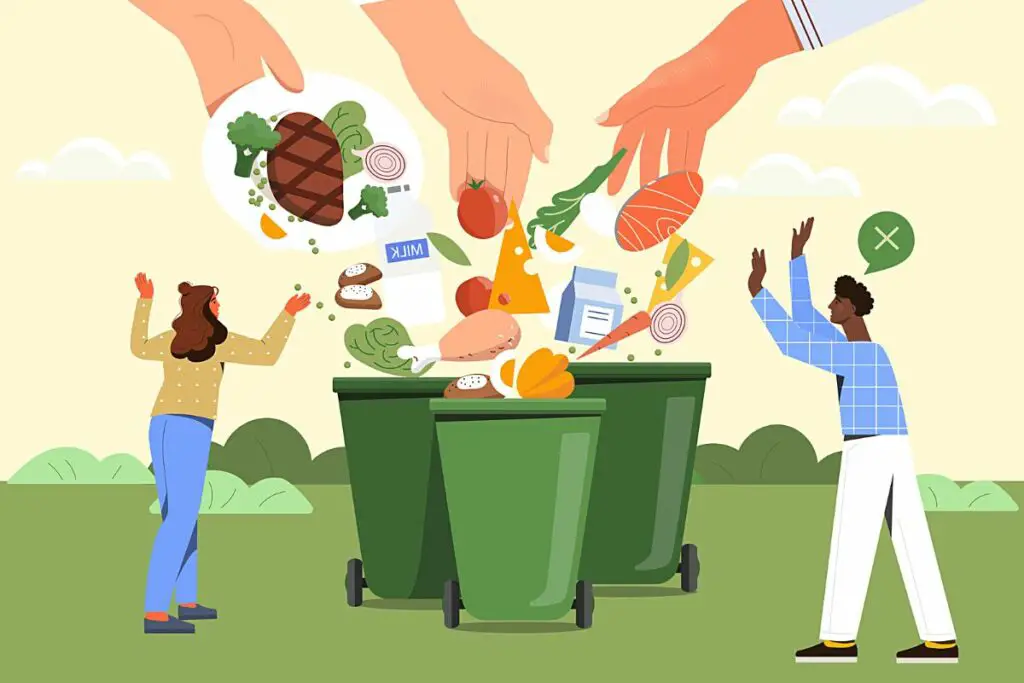
Food waste is a significant problem as it not only wastes valuable resources such as water, labor, and land that were used to grow and manufacture the food but also contributes to economic and social issues like food price inflation and food insecurity, particularly when so many people struggle to access enough food.”
This is why this article is here to shed some light on hardcore facts and statistics to encourage individuals to avoid food waste as much as possible.
We’ll cover current statistics on food waste in America, compare this to other countries, and take a look at some reasons why food waste is such a huge problem.
Statistics on Food Waste in America

With financial crises and pandemic panics, it’s no surprise that food waste has recently been on the increase, with millions of Americans suffering from what is known as food insecurity. Currently, around 30-40% of America’s entire food supply is wasted, totaling up to almost 40 million tons of the stuff each year [2].
This creates devastating consequences for our ecosystem, especially around the holiday seasons of Thanksgiving and Christmas. Indeed, food spoilage is one of the most significant reasons for food waste.
While some state laws have restricted the amount of food that can end up in the dreaded landfill, the country isn’t yet doing enough to curb this environmental crisis. Let’s take a look at food waste in different sectors.
Households: 43%
Households take the cake when it comes to food waste. A whopping 43% of US waste is produced in individual homes, meaning consumers can take almost half of the country’s blame. Throwing food away in the house is often due to misunderstanding expiration labels and food spoilage.
Grocery stores, restaurants, and other food services: 40%
Food services produce the following highest amount of waste, boasting 40%. Again, this is a consequence of food spoilage.
In grocery stores, almost a third of food is thrown away, creating an annual amount of around 16 million pounds of waste.
In restaurants, companies lose $162 billion each year due to food waste costs [3]. This type of waste concerns not only food spoilage but also customers sending their food back to the kitchen and leaving it when they become too full.
Farms: 16%
Farms account for 16% of the country’s food waste, with almost a third of what they produce never being consumed at all. While being significantly less guilty than food services and individual households, 16% still tallies up to an extensive amount of food when considering the overall 40 million tons per year!
Food manufacturers: 2%
Manufacturers account for only 2% of America’s yearly food waste, often due to human error and a failure to meet manufacturing standards concerning allergies and other regulations. This means that some food never even leaves the door to get to wholesalers, never mind the final consumer.
So, as you’ll be able to tell, food waste in America is a colossal problem. So colossal, in fact, that the amount of food waste America produced way back in 2010 was enough to fill the empire state building 91 times [4]! If this was in 2010, imagine how much this has increased since then…
Now, the annual food waste measurement equates to each individual wasting over 200 pounds of food per year [5], suggesting that the average American family burns over $1,500 of their annual household income. In total, this would be equivalent to the whole country tossing away $218 billion every single year [6]!
Read Also: 14 Interesting Global Food Production Statistics That May Surprise You!
7 Most Wasted Foods in America
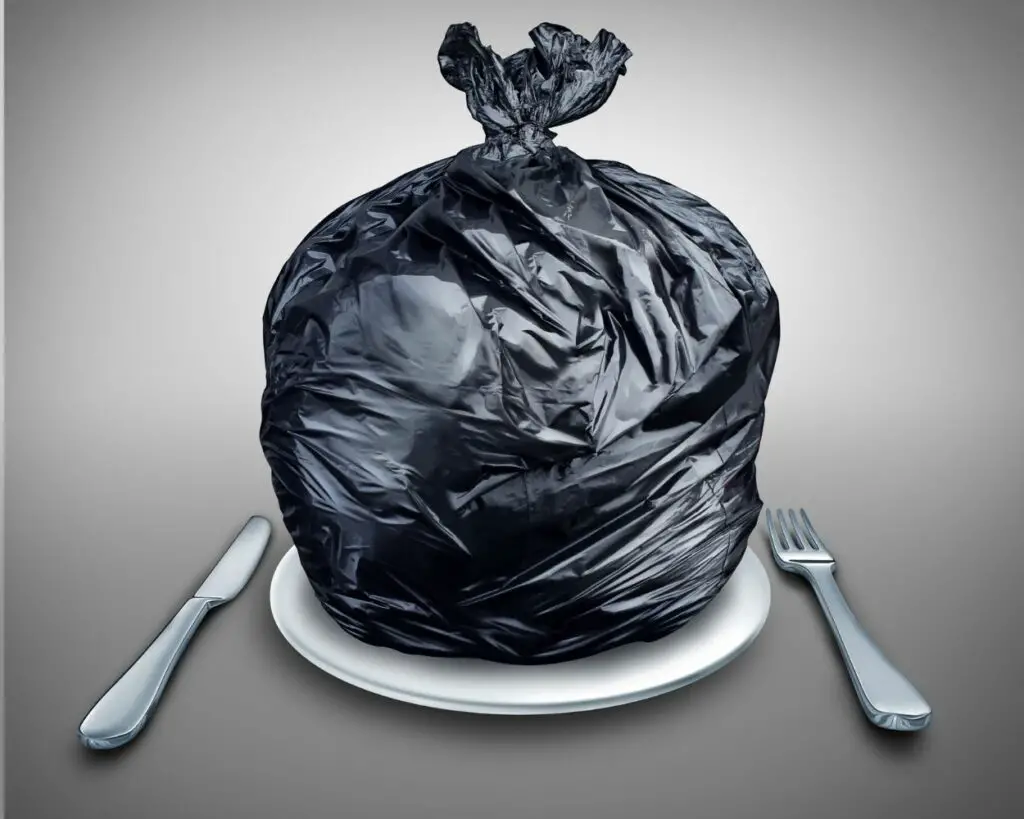
While multitudes of food are discarded each year in the US, some foods are thrown out more than others. Let’s take a look at the most wasted foods below [7].
1. Bread

Shockingly, more than 240 million bread slices are tossed in the trash each year.
Bread, a staple food item in many households, is often overlooked as a source of waste. Shockingly, more than 240 million bread slices are tossed in the trash each year. This is equivalent to throwing away nearly 34,000 loaves of bread each and every day.
One of the main reasons for this high level of bread waste is the overproduction of bread by bakeries and grocery stores. Many stores overstock their bread shelves to ensure they never run out, leading to surplus bread that eventually goes bad.
Additionally, many consumers often purchase more bread than they need and throw away the excess.
Read Also: Keeping Bread Fresh And Crusty (Reviving Stale Baguette).
2. Milk

Imagine 5.9 million glasses of milk being poured down the drain – this is essentially what happens in America every single year.
This staggering amount of wasted milk is a result of various factors, including overproduction, lack of proper storage and distribution, and consumer demand for certain types of milk.
Dairy farmers often produce more milk than they can sell, resulting in a surplus that must be disposed of.
Additionally, many grocery stores, supermarkets, and distributors have strict expiration dates for milk products, resulting in perfectly good milk being thrown away if it does not sell in time.
3. Fruit and vegetables
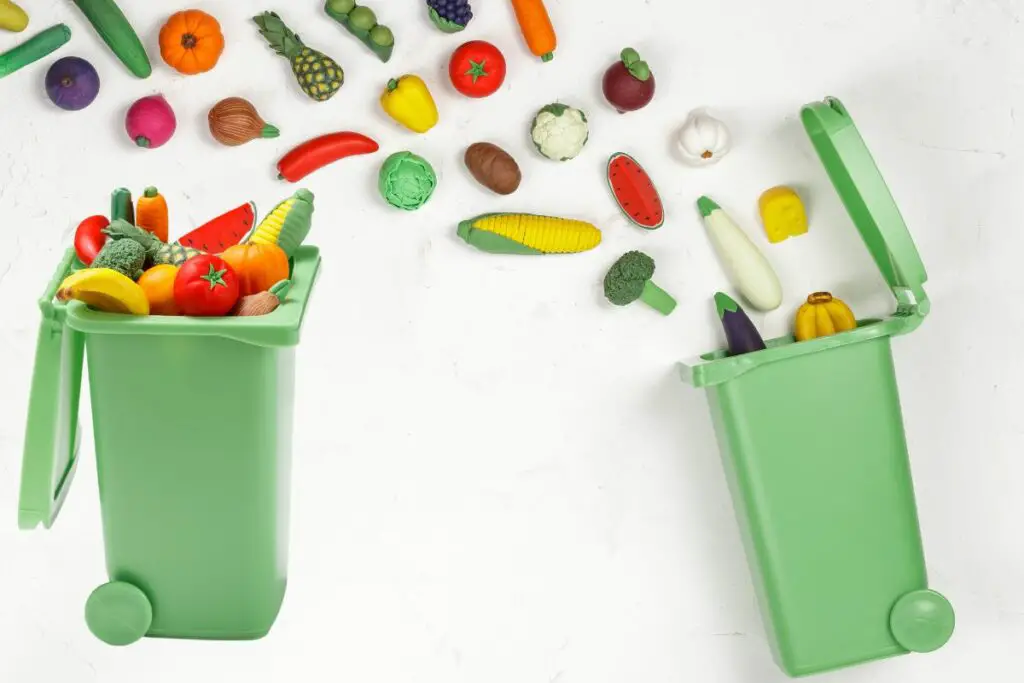
Due to fresh produce rotting quickly, over half of the fruit and vegetables in America contribute to a tremendous amount of food waste. This equates to approximately 600 million tons of produce wasted annually.
Not only are the fruit and vegetables discarded during production, but the aesthetic appeal of fruit and vegetables accounts for them being thrown away both at the retail and household stages of their journey.
Bananas are one of the most wasted fruit in-store because of brown marks on a banana or some minor bruises.
4. Potatoes
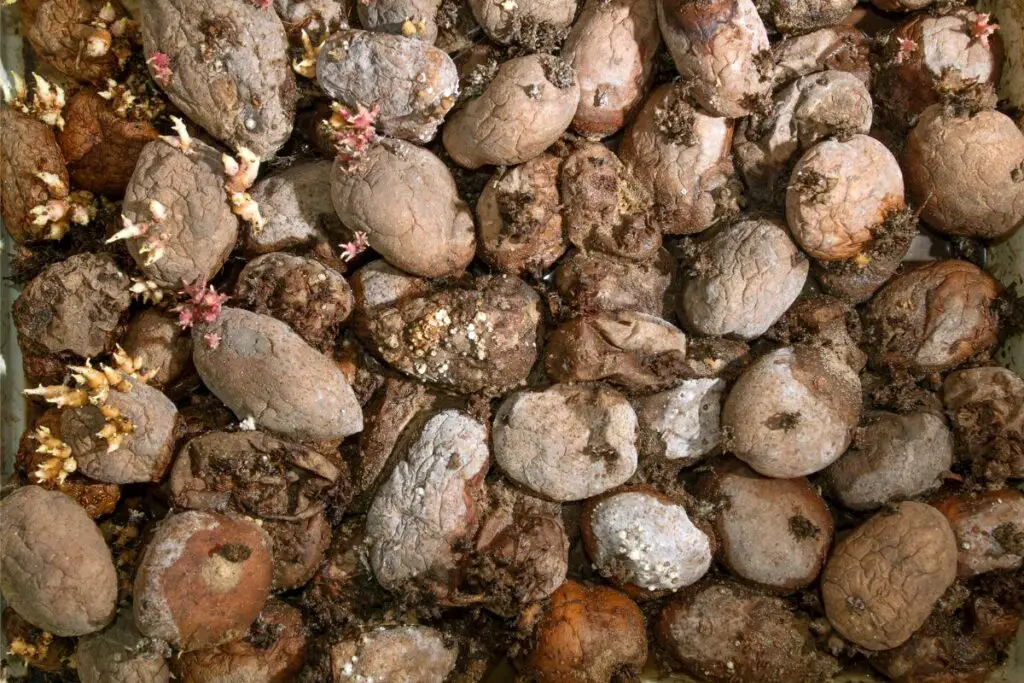
In the United States, a significant amount of food waste occurs each year, with potatoes being one of the most commonly wasted foods. America chucks a whopping 5.8 million potatoes into the bin each year. This is due to various reasons, such as overproduction, strict cosmetic standards, and supply chain inefficiencies.
5. Homemade meals
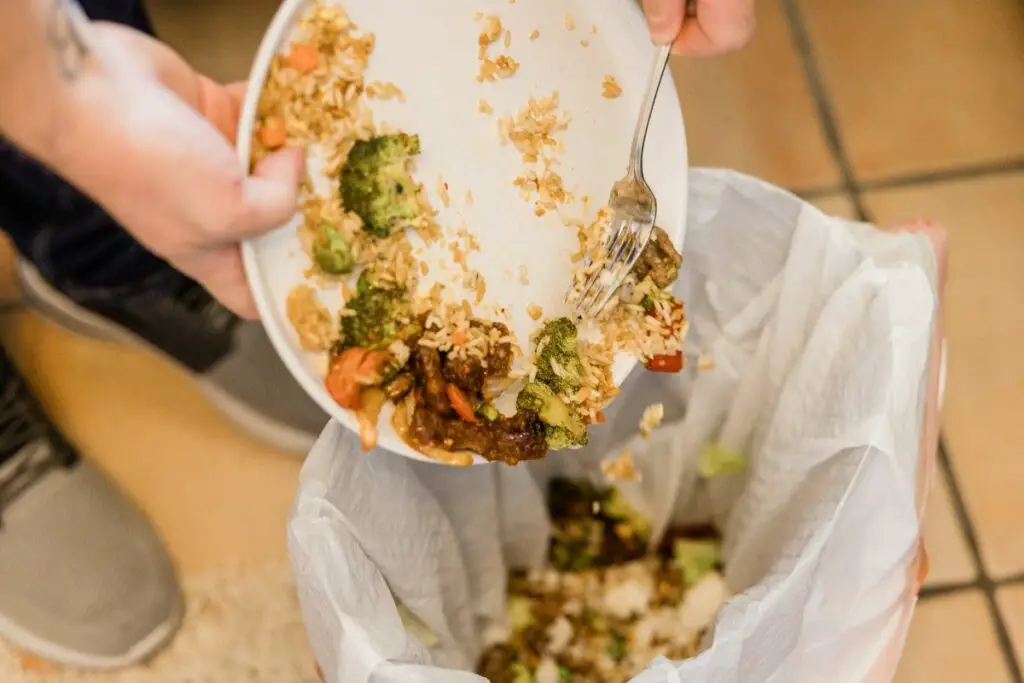
Homemade meals are also one of the most wasted foods in America, and that is for a few reasons.
One reason is that people often cook more food than they need, leading to leftovers that may not be eaten before they go bad. Another reason is that people may not have a good sense of how much food they will actually consume, leading to overestimating the amount of food needed and thus having more leftovers.
Additionally, people may not properly store the leftovers, leading to spoilage.
Furthermore, people may be less likely to save or eat leftovers because they are less appealing than freshly cooked meals. Lastly, some people may not be aware of the cost and environmental impact of food waste, so they may not make an effort to save leftovers or plan meals to reduce waste.
6. Turkey
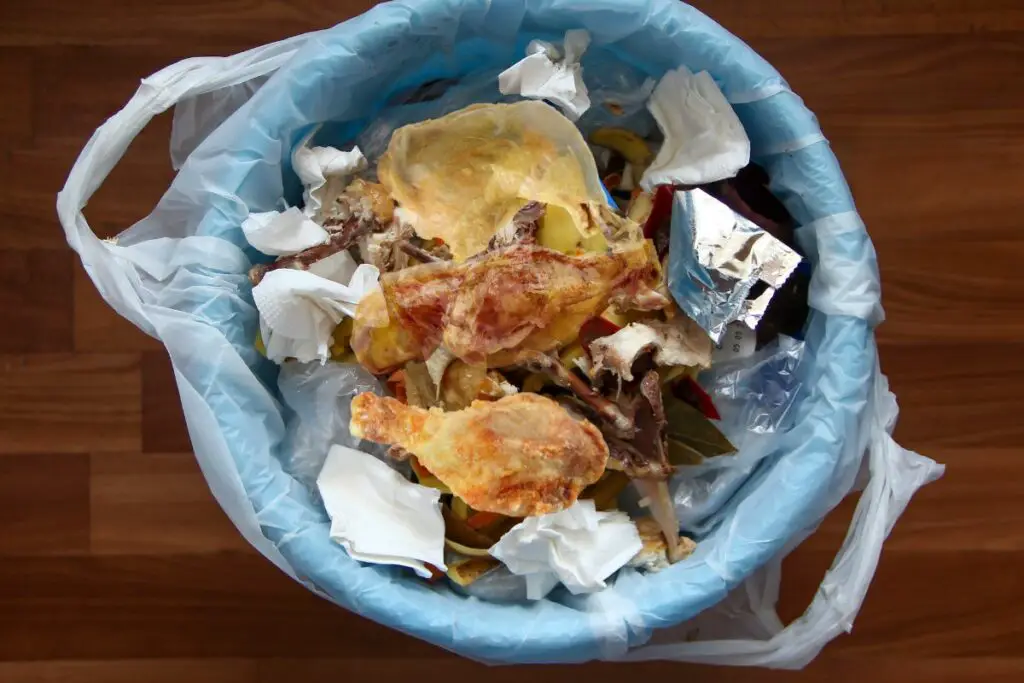
This one may be obvious – with the Thanksgiving holiday putting a considerable strain on food production, 35% of turkey meat actually gets chucked in the trash once all the festivities have blown over.
So, turkey is one of the most wasted meats in America due to several reasons, such as seasonal demand, large portion sizes, lack of proper storage and preservation, limited use, and consumer preferences.
7. Seafood
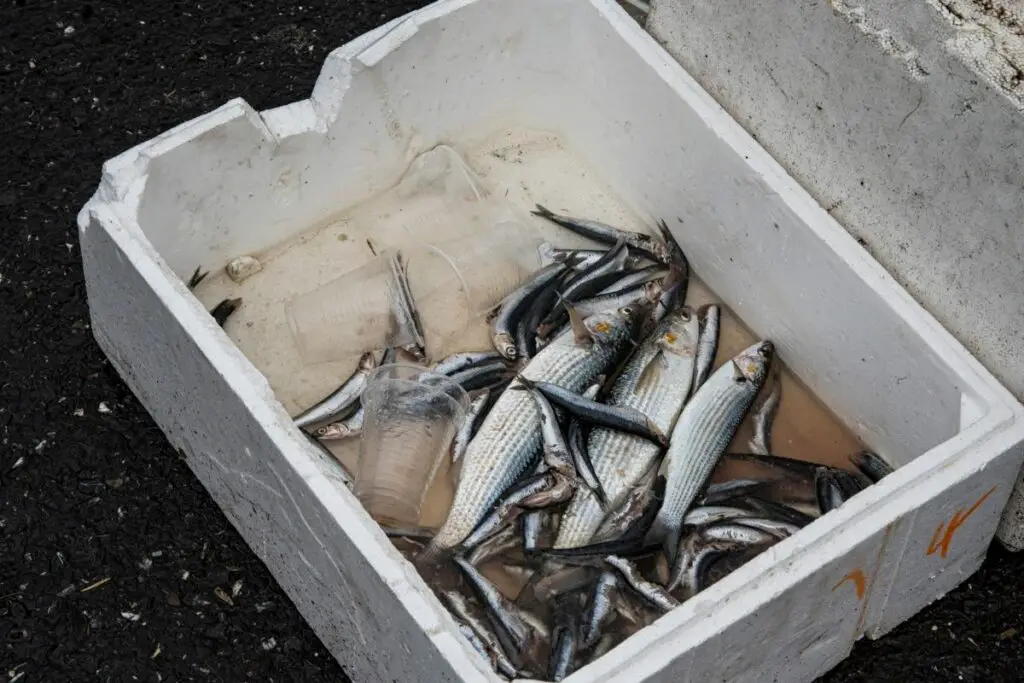
Seafood, including salmon, tuna, and shrimp, is often thrown away in many households and in a supply chain.
According to some studies, it is estimated that up to 20% of seafood in the US is wasted, which is equivalent to about 1.3 billion pounds of fish and shellfish each year. It is also reported that most seafood waste occurs at the consumer level, with households throwing away an estimated $1.5 billion worth of seafood each year.
One reason for such a wastage is that seafood is highly perishable and can spoil quickly if not stored or handled properly.
Additionally, seafood is often caught or farmed in distant locations, so it must be transported long distances to reach consumers. This increases the risk of spoilage, making it more difficult to ensure that the seafood is fresh when it reaches the consumer.
Additionally, seafood may be wasted due to overfishing and a lack of sustainable fishing practices, leading to a surplus of fish that cannot be sold.
Finally, seafood can be wasted due to consumer behavior, such as purchasing more than they need, not storing it properly, or not consuming it before it spoils.
Read Also: Staggering Amount Of Food an Average Person Eats In a Year (It Is a Lot!)
Food Waste Across The Globe
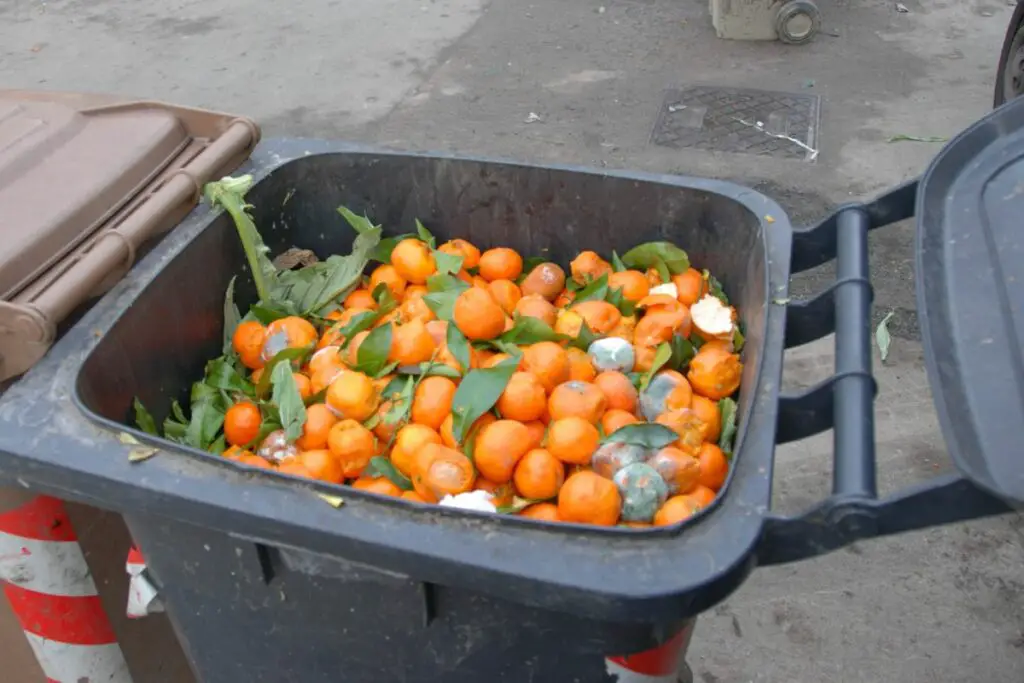
Now let’s take a look at how America’s eye-watering amount of waste compares to the rest of the world. Scan the list of the guiltiest contributors below [8].
Which country wastes the most food besides America:
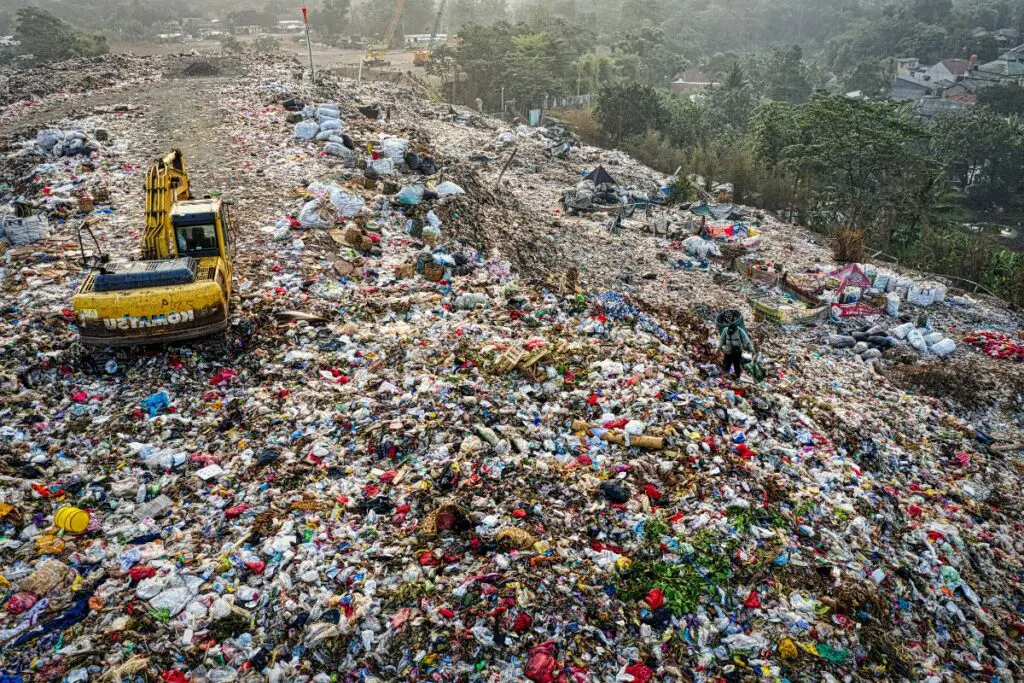
China and India are among the top countries in the world regarding household food waste production. According to estimates, China produces an estimated 92 million metric tons of household food waste annually, while India produces approximately 69 million metric tons.
Additionally, these numbers likely underestimate the true scale of food waste as they only consider household waste and not commercial or industrial waste.
- China. As the world’s most populous country, it’s no surprise that China produces over 91 million tons of food waste every year.
- India. India also produces an extensive amount of waste, reaching over 69 million tons annually.
- Japan. Since Japan doesn’t boast the same large populations as China, India, and the US, its food waste amount is significantly less at 8 million tons per year. However, Japan’s densely populated nature accounts for why this number is still so high.
- Germany. Due to this European country’s population size and high living standards, it reaches over 6 million tons of food waste.
- The UK. The United Kingdom is guilty of producing over 5 million tons of food waste.
- France. Like the UK, France also produces around 5 million tons of waste, assumably due to its fondness for baked goods, amongst other traditional delicacies.
- Russia. Russia produces around 4 million tons of wasted food yearly because of its colossal scale and population.
Causes of Food Waste in America
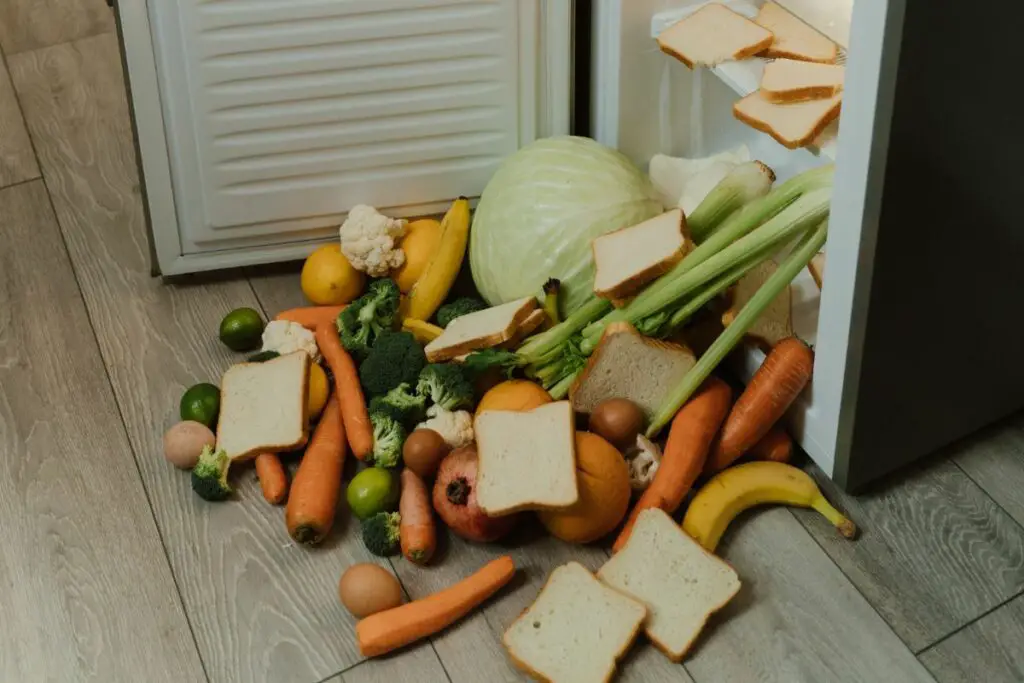
Now that you know the vast scale of America’s food waste problem, perhaps it’s worth delving into why it produces so much.
1. Overproduction
In these troubling times, the US is guilty of overproducing food, with production being encouraged to boost economic growth and food security [9]. Despite this, overproduction has not only led to multitudes of food waste but has also caused damage to water and soil supplies.
2. Consumer demand for perfect produce
These days, consumers demand to receive ‘perfect produce.’ Fruit and vegetables are a golden example, explaining why so many unattractive-looking pieces of fresh produce are designated to the bin when they are undoubtedly edible.
3. Lack of proper storage facilities
Due to overproduction, the pressuring demand has grown for proper storage facilities. Because there aren’t enough suitable storage facilities to meet this demand, much of the food suffers from spoilation and the growth of bacteria, leading to it being sent to landfill sites.
4. Lack of understanding of the expiry dates
As mentioned earlier, around 80% of consumers shuck perfectly good food items in the bin because they misunderstood the expiration label on the packaging. Consumers often get confused about best-before dates, expiration dates, and sell-by dates.
5. Not planning your meals
Grocery shopping without a plan or shopping list can lead to food waste. It can result in purchasing unnecessary items or duplicates, and perishable items may go bad before they can be used.
Having your meals planned out and making a shopping list allows for more efficient and effective grocery shopping and helps ensure that all necessary items are purchased and can be used before they expire. Not only will you cut down on food waste, but you will also save money.
Read Also: 9 Tips How To Cut Grocery Bill By 90 Percent? (Difficult But Achievable).
FAQs

Q. Where can I find updated statistics on US food waste?
A. You can find updated statistics on US food waste from various sources, including government agencies such as the USDA and EPA, as well as non-profit organizations such as the Natural Resources Defense Council (NRDC) and Feeding America. Additionally, academic institutions and research firms may also have data on food waste. You can also check websites like rts.com or statista.com for reports and statistics on food waste in the US. World Population Review also provides current statistics on this topic and some detailed comparisons across the globe to help you gain additional insight into how America’s dealings with food waste compared to the rest of the world this year.
Q. Is food waste increasing or decreasing in America?
A. Food waste in America has been decreasing in recent years due to a combination of government initiatives, industry efforts, and consumer awareness campaigns. According to various sources, food loss at the retail and consumer levels has decreased by 14% from 2010 to 2018. The food industry is taking steps to reduce food waste, such as improving supply chain management, changing packaging to extend the shelf life of food, and donating surplus food. Consumers are becoming more aware of the issue and are taking steps to reduce food waste by planning meals, buying only what they need, and storing food properly.
Q. How to reduce food waste at home?
A. There are several steps that individuals can take to reduce food waste at home. One of the most effective ways is to plan meals in advance and only buy the ingredients you need. Another strategy is to be mindful of expiration dates and use older items first. Also, properly storing food can help extend its shelf life and reduce spoilage. This can include storing fruits and vegetables separately, properly packaging meat and fish, and keeping the refrigerator at the right temperature. Finally, donating non-perishable food items to food banks or shelters can help to feed those in need and reduce the amount of food wasted.
Q. What happens to food waste in a landfill?
A. When food waste is sent to a landfill, it decomposes, producing methane, a potent greenhouse gas, and other harmful gases. It also generates leachate, a liquid that can seep into the soil and contaminate water sources. In addition, food waste in landfills can attract pests and vermin, creating a public health hazard.
Q. Can food waste be recycled?
A. Food waste can be recycled through processes such as anaerobic digestion, through which bacteria break down organic matter and convert it into biogas and a nutrient-rich fertilizer, or through composting, which breaks it down into a soil amendment. Food waste can also be used as feed for animals in some areas. Recycling food waste helps to reduce the amount of food waste sent to landfills and provides a source of renewable energy and fertilizer that can improve soil quality.
Read Also: 10 Best Food Industry Statistics And Data Websites.
Conclusion
Hopefully, this article has given you some food for thought (excuse the pun!) about how much food waste is actually produced in America. While America is not the biggest contributor to food waste on the planet, it still falls near the top of the leaderboard, tailing China and India with its excessive amount.
As the article shows, individual consumers are the most significant contributor to food waste in the US, meaning they must step up and take some responsibility regarding our surrounding environment.
Food waste is triggered by several different reasons in several different sectors, but this doesn’t mean we can’t solve it one step at a time!
References:
- [1], [2], [3], [6] Food Waste in America in 2023: Statistics + Facts: https://www.rts.com/resources/guides/food-waste-america/
- [4] Shocking U.S. Food Waste Facts & Statistics: https://visual.ly/community/Infographics/environment/21-shocking-us-food-waste-facts-statistics
- [5] The Enormous Scale of America’s Food Waste: https://www.visualcapitalist.com/sp/the-enormous-scale-of-americas-food-waste/
- [7] 10 Food Waste Statistics in America: https://earth.org/food-waste-in-america/
- [8] Food Waste by Country: https://worldpopulationreview.com/country-rankings/food-waste-by-country
- [9] Agricultural Overproduction and the Deteriorating Environment: https://www.e-ir.info/2016/07/07/agricultural-overproduction-and-the-deteriorating-environment/

Individual people and households do waste a ridiculous amount of food but the food producers waste an absolutely phenomenally high amount of food. There’s more than enough food on Earth to make sure nobody ever goes hungry. We can all practice reducing food waste in our own lives.